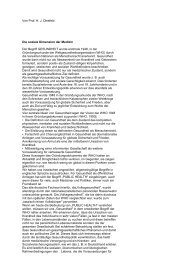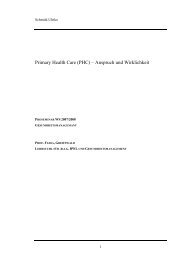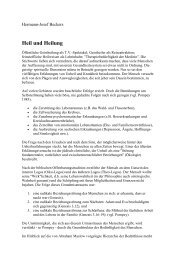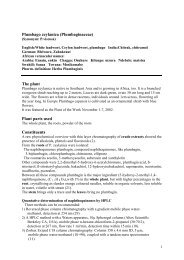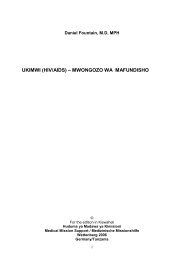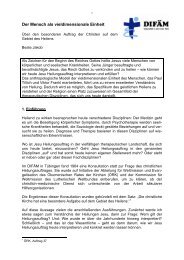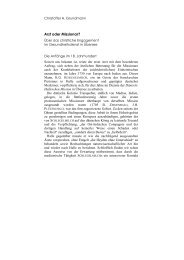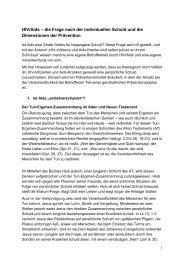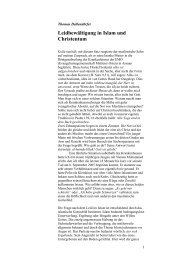(PHCII) - MMH/MMS
(PHCII) - MMH/MMS
(PHCII) - MMH/MMS
You also want an ePaper? Increase the reach of your titles
YUMPU automatically turns print PDFs into web optimized ePapers that Google loves.
Table 12: Relationship between age and place of delivery (n = 400)<br />
Place of delivery Total<br />
Age in years Health unit Home n<br />
16 - 24 58 (51.33%) 55 (48.67%) 113 (100%)<br />
25-35 91 (45.05%) 111 (54.95%) 202 (100%)<br />
36-49 43 (50.59%) 42 (49.41%) 85 (100%)<br />
Total 192 (48%) 208 (52%) 400 (100%)<br />
The table shows that women aged between 25 - 35 years, majority 111(54.95%) had their<br />
deliveries at home and women aged between 36 - 49 42(49.45%) had their deliveries at<br />
home also, while women aged 16 - 24 years 58(51.33%) had their confinement in<br />
hospital. This indicates that age influences place of delivery, as the older the woman<br />
becomes the higher the chances of delivering at home.<br />
Table 13: Reasons given by mothers who had home delivery (n = 208)<br />
Reasons Number of respondents<br />
Sudden onset of labour 106 (50.96%)<br />
Clients preference 48 (23.08%)<br />
No health unit around (distance) 12 (5.77%)<br />
High costs 11 (5.29%)<br />
Presence of other attendants e.g TBAs, relatives 8 (3.85%)<br />
Others 23 (11.06%)<br />
Total 208 (100%)<br />
The above table shows that more than a half 106 (50.96%) of mothers who had home<br />
delivery had a sudden onset of labour, whereas 48(23.08%) preferred themselves to<br />
deliver at home. This indicates that these women who had sudden onset of labour could<br />
also be due to low knowledge on signs and symptoms of labour.<br />
23




